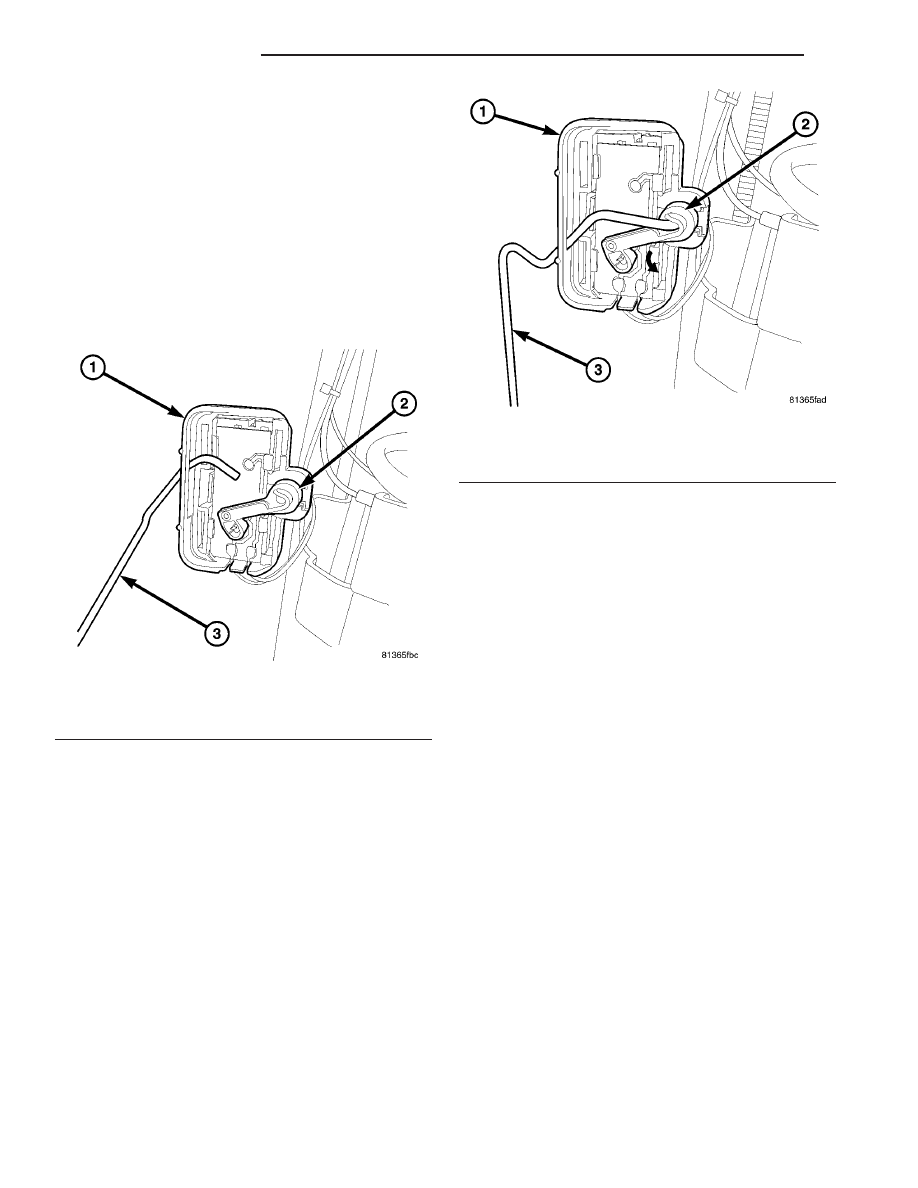Dodge Sprinter. Manual - part 247

INSTALLATION
CAUTION: Whenever the fuel pump module is ser-
viced, the rubber gasket must be replaced.
(1) Thoroughly clean locknut (lockring) and lock-
nut threads at top of tank.
(2) Position new gasket (seal) to fuel tank opening.
(3) Position float rod assembly partially into fuel
tank.
(4) Position fuel pump module partially into fuel
tank.
(5) Twist rod (3) (Fig. 15) into clip (2) on fuel level
sensor (1).
(6) Rotate clip (2) (Fig. 16) to attach rod (3) to
clip.
(7) After attaching float assembly to fuel level sen-
sor, carefully position fuel pump module into opening
in fuel tank.
(8) Position locknut over top of fuel pump module.
Install locknut finger tight.
(9) The fuel line fittings should be pointed to the
right side of the vehicle. Rotate and position align-
ment arrow (Fig. 17) towards right side of vehicle (if
necessary) before tightening locknut. This step
must be performed to prevent the module’s
float from contacting the side of fuel tank.
(10) Tighten locknut using Special Tool #6856.
Refer to Torque Specifications.
(11) Install fuel tank. Refer to Fuel Tank Removal/
Installation.
Fig. 15 FLOAT ROD CLIP INSTALLATION
1 - FUEL LEVEL SENSOR
2 - CLIP
3 - FLOAT ROD
Fig. 16 FLOAT ROD CLIP INSTALLATION
1 - FUEL LEVEL SENSOR
2 - CLIP
3 - FLOAT ROD
14 - 20
FUEL DELIVERY
VA